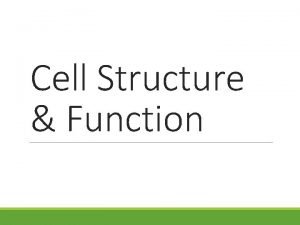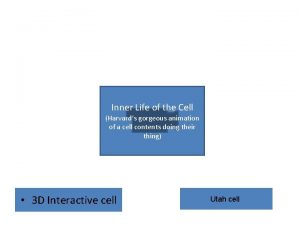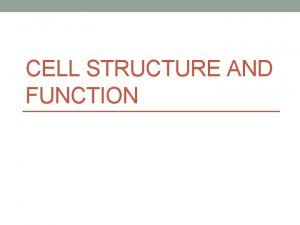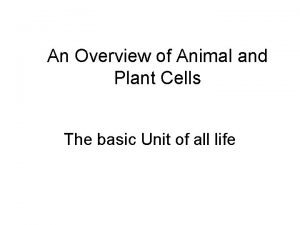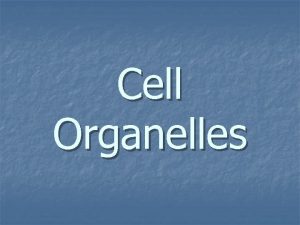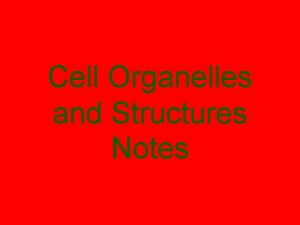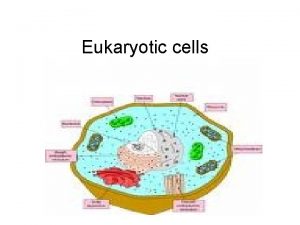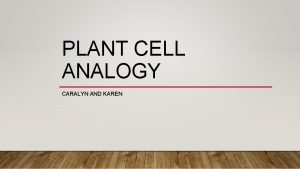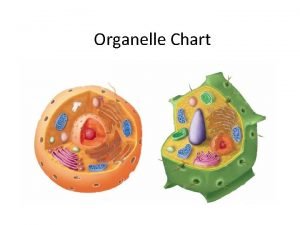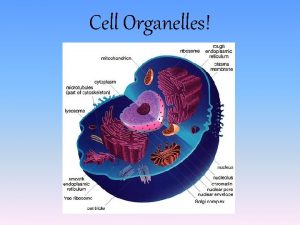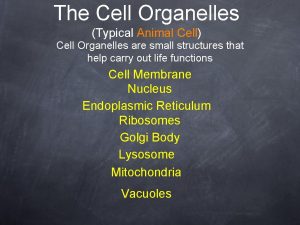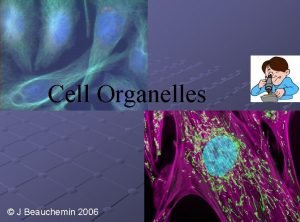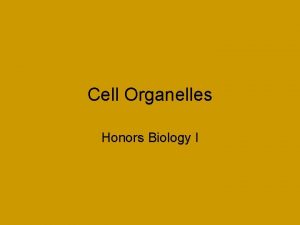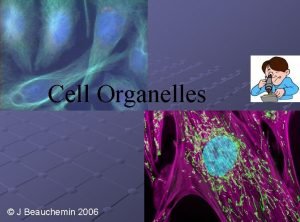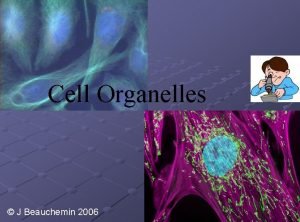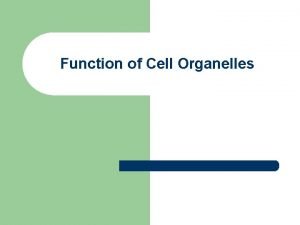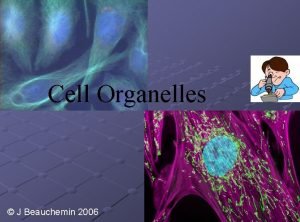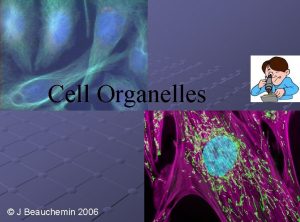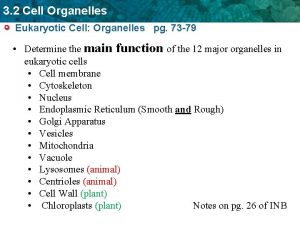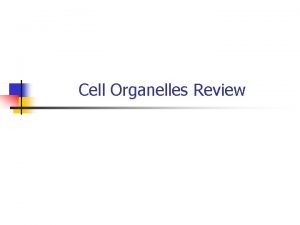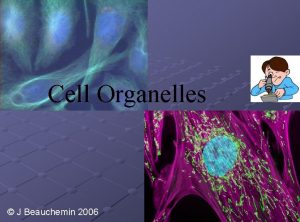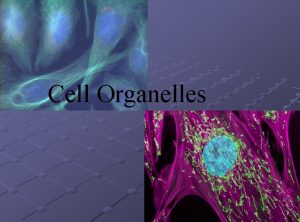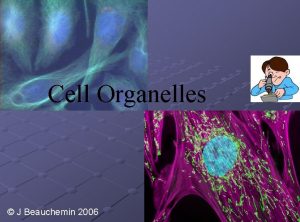The Cell cell organelles Cell as an Efficient
















- Slides: 16

The Cell & cell organelles

Cell as an Efficient, Open System Cells carry on all life processes including needing energy, growth, response to stimuli, producing waste & removal, reproduction Must work to maintain balance, be efficient and conserve energy

Cell Structures 1. Cell membrane: protective barrier; transport of materials in and out; cell interaction, communication and recognition of molecules 2. Nucleus: contains DNA and directs all cellular activities; surrounded by nuclear envelope; ribosomes are made in an area called the nucleolus

Prokaryote - cell does not have a nucleus Vs Eukaryote – cell has a nucleus

3. Cytoplasm: gel like substance inside the cell; contains the nutrients required by cells

4. Cell wall: rigid frame around cell; provides strength and support ◦ Found in plants, bacteria, fungi and protists (single cell organism with nucleus) 5. Chloroplast: contain chlorophyll; sites of photosynthesis (where plant food is made)

6. Vacuoles/vesicles: membrane bound structures that serve to store nutrients, products of secretion and fats ◦ Plants – central vacuole stores water; swells when water enters and turgor pressure increases and causes the cell to be turgid ◦ Vesicles transport substances through the cell ◦ Turgor pressure: pressure exerted against a cell wall by water

Flower Power It is the vacuoles that dissolve different ions, many of which contain pigments These pigments give the flowers their beautiful colours that attract bees for pollination

7. Endoplasmic Reticulum: series of interconnected small tubes that branch from the nuclear envelope; transports materials Rough ER: ribosomes attached and with protein synthesis ◦ Smooth ER: fat and oil production ◦ associated

8. Ribosome: organelle that is the site of protein synthesis. May be attached to the endoplasmic reticulum or free in the cytoplasm. ◦ Dense looking ◦ Formed of 2 different parts: small subunit and large subunit ◦ Protein synthesis: amino acids are assembled into proteins

9. Lysosomes: membrane bound sacs in the cell in which digestion can go on ◦ Defence against invading bacteria, destruction of damaged organelles, controlled digestion of certain tissues during development

10. Golgi apparatus: receives substances from endoplasmic reticulum and packages them for transport out of the cell ◦ Flat, disc shaped sacs involved in secretion

11. Mitochondria: where cellular respiration occurs and ATP is formed ◦ The “cell powerhouse”

12. Centrioles : only found in animals cells. They are organelles involved in cell reproduction

Plant and Animal Cells: Review • • • Nucleus Ribosomes Golgi apparatus Nuclear envelope Rough ER Smooth ER Cell membrane Cytoplasm Mitochondrion Cellular respiration Similarities Plants have 1 large vacuoles, chloroplast and a cell wall. They have no centrioles. Animals have several vacuoles, no chloroplasts or cell walls. They have centrioles. Differences

Higher level questions: 1) The cell organelle functions & structure can be analogous to a city. What does each organelle correspond to? (What are other analogies) 2) The ER is attached to the nucleus. How is this close association important to the cell’s activities? 3) What would happen inside a cell if its lysosomes had leaky membranes?
 Productively efficient vs allocatively efficient
Productively efficient vs allocatively efficient Productively efficient vs allocatively efficient
Productively efficient vs allocatively efficient Allocative efficiency vs productive efficiency
Allocative efficiency vs productive efficiency Productively efficient vs allocatively efficient
Productively efficient vs allocatively efficient Productively efficient vs allocatively efficient
Productively efficient vs allocatively efficient White blood cell organelles
White blood cell organelles Inner life of a cell
Inner life of a cell Plant cell organelles
Plant cell organelles Cell structure and function graphic organizer
Cell structure and function graphic organizer Plant cell
Plant cell Organelle
Organelle What is this cell
What is this cell Mitochondria nickname and function
Mitochondria nickname and function Centrosoma
Centrosoma Chloroplast house analogy
Chloroplast house analogy Interesting facts
Interesting facts Smallest organelle in a cell
Smallest organelle in a cell





